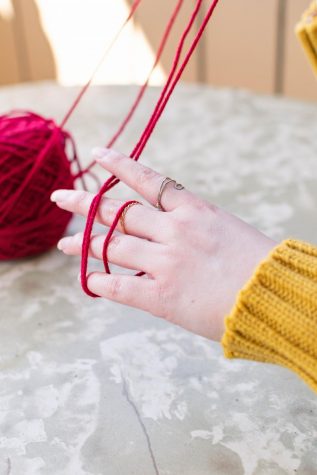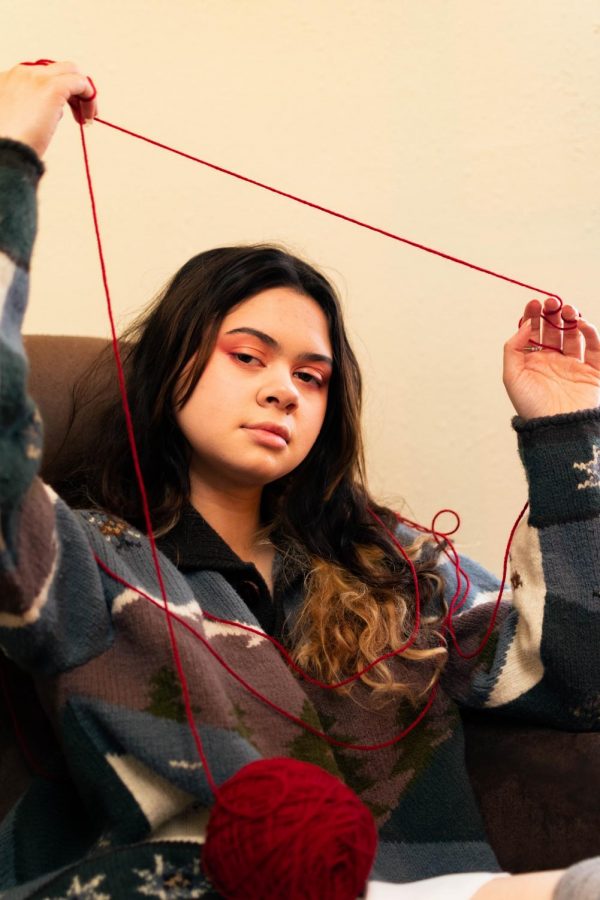Stitched
May 21, 2021
Take a moment to think about how you perceive knitting. More often than not, in a Eurocentric ideal, we think of knitting as an idle hobby by older white women. We think of patterns and knits that scream tacky or kitsch. However, like many hobbies, the range of identities span a multitude of ethnicities, gender and sexual identities, and religious backgrounds. The community is a vibrant, ever-growing craft movement that has bolstered international recognition through the internet. For the last two decades, many knitting communities have gathered on Ravelry, a website made with the purpose of sharing patterns and for designers to show off their work. These tight-knit communities however are not without their internal issues, especially in terms of BIPOC representation. Due to the idea of knitting being rooted within the concepts of whiteness, many BIPOC designers and knitters face microaggressions, fetishization, and erasure by white designers.
When unraveling the root cause of BIPOC erasure in knitting spaces, it’s important to understand the documentation of the history of knitting itself. Historical documentation and preservation of knitwear is difficult, as wool and string easily decay. Many knitting traditions have been passed down orally and through practice, keeping the pattern alive through shared experiences. Prior to the 1990s, research beyond English knitting was less researched. Author and textile researcher Irena Turnau states in her book “The History of Knitting Before Mass Production” that the basic definition of knitting itself is tricky to determine. Turnau defines that knits are based on stitching an unlimited string in an elastic formation using one or two needles. This definition can be applied to many crafts, however often gatekept to exclude non-Eurocentric ideas of knitting. In her book, Turnau states crochet is made to be “decorative” and does not count in the industry. Crochet was developed most likely from Chinese needlework, as well as Turkey, India, Persia and North Africa. Many iconic fashion pieces that come from designers of color are crochet, such as the rasta cap. Turnau gives a definition that ultimately excludes the work of POC, thus gatekeeping what knitting is, which is a common issue within knitting spaces.

The diminishing and labeling of certain knit crafts as “kitsch” is a common microaggression within knitting spaces. Black researcher and knitting activist Lorna Hamilton-Brown details the history of knitwear outside the Eurocentric perspective and breaks down the erasure of BIPOC voices in knitting communities in her acclaimed MA dissertation “Myth: Black People Don’t Knit.” Hamilton-Brown highlights that she and many other women of color have brought knitting down orally. Her mother describes how in Jamaica, knitting and handicrafts were an important part of creative culture, with the process including tearing apart flour bags and knitting garments from the materials. Many women in Jamaica and Kenya would knit whichever way they could, sharpening bicycle spokes or using ends from a broom as needles.
These ideas are not passed down through documentation, but through oral traditions, a practice that is not exclusive to African and Caribbean cultures. One of Hamilton-Brown’s students stated “there are no knitters in his homeland, Vietnam. [When] asked [if] his mother knit, he said yes, and she learned from her mother.” Countries that have faced imperialism and colonization have had knitwear culture systematically erased through the popularization of myths that people of color don’t knit, although their designs have had a massive influence on popular fashion culture. For example, the patterns of Cowichan Knitting, developed by the Cowichan First Nation in British Columbia, were heavily popularized in the 1920s and ‘40s. Many corporations and early mass production companies imitated the patterns of Indigenous designs and spread it out all over North America. Today, Eurocentric perspectives have diminished these designs to “vintage” or “kitsch”, with a complete lack of respect to the original designers.

So you may be asking, why is this so important? The answer is several key reasons. In contemporary high fashion, many designers and celebrities are seen showcasing distressed knits, breathing new life into the mass knitwear industry. As the popularity of knitwear grows, so do the hobby spaces, where representation matters. Sites like Instagram and Ravelry have had many cases of predominantly white knitters fetishizing and tokenizing BIPOC voices and designs, perpetuating further myths that POC do not knit. The initiatives created by POC on these sites focus on educating hobby spaces and the general public on issues of design voices, breaking the ideas of whiteness that have been woven into knitting as a whole. Knitting activists like Tina Tse(@tina.say.knits) of Unraveling Mag are creating space for BIPOC designers to showcase their work and give an opportunity to reach the financial success they would not hold compared to many white knitters.
Knitting is a warm activity, full of international cultures and intersectional ideas, passed down in a familial way. As it expands in reach, it’s important to celebrate and recognize the work of voices who have been systemically erased from society. If you show anyone who is interested in picking up a pair of knitting needles and yarn, make sure to support your local BIPOC designers, who have been passing down these patterns for centuries and continue to for many to come.


